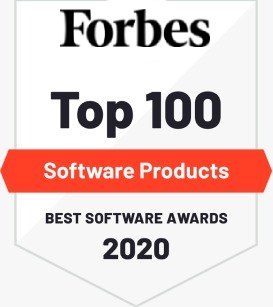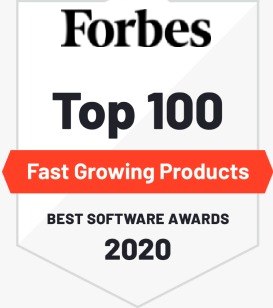Section 1 : Introduction
|
|
Lecture 1 | Introduction to the course | 00:05:53 Duration |
|
|
Lecture 2 | Introduction to Elasticsearch | |
|
|
Lecture 3 | Overview of the Elastic Stack | 00:17:20 Duration |
|
|
Lecture 4 | Walkthrough of common architectures | 00:10:42 Duration |
|
|
Lecture 5 | Guidelines for the course Q&A |
Section 2 : Getting Started
|
|
Lecture 1 | Overview of installation options | 00:02:07 Duration |
|
|
Lecture 2 | Running Elasticsearch & Kibana in Elastic Cloud | 00:08:08 Duration |
|
|
Lecture 3 | Installing Elasticsearch on macOS and Linux | 00:04:59 Duration |
|
|
Lecture 4 | Installing Elasticsearch on Windows | 00:05:13 Duration |
|
|
Lecture 5 | Exploring the Elasticsearch directory | 00:06:48 Duration |
|
|
Lecture 6 | Installing Kibana on macOS and Linux | 00:03:27 Duration |
|
|
Lecture 7 | Installing Kibana on Windows | 00:03:23 Duration |
|
|
Lecture 8 | Understanding the basic architecture | 00:06:46 Duration |
|
|
Lecture 9 | Inspecting the cluster | 00:07:33 Duration |
|
|
Lecture 10 | Sending queries with cURL | 00:05:33 Duration |
|
|
Lecture 11 | Sharding and scalability | 00:08:34 Duration |
|
|
Lecture 12 | Understanding replication | 00:17:22 Duration |
|
|
Lecture 13 | Adding more nodes to the cluster (for development) | 00:08:30 Duration |
|
|
Lecture 14 | Overview of node roles | 00:09:26 Duration |
|
|
Lecture 15 | Wrap up | 00:01:04 Duration |
Section 3 : Managing Documents
|
|
Lecture 1 | Creating & deleting indices | 00:03:06 Duration |
|
|
Lecture 2 | Indexing documents | 00:04:04 Duration |
|
|
Lecture 3 | Retrieving documents by ID | 00:01:18 Duration |
|
|
Lecture 4 | Updating documents | 00:03:58 Duration |
|
|
Lecture 5 | Scripted updates | 00:07:42 Duration |
|
|
Lecture 6 | Upserts | 00:02:29 Duration |
|
|
Lecture 7 | Replacing documents | 00:01:25 Duration |
|
|
Lecture 8 | Deleting documents | 00:00:59 Duration |
|
|
Lecture 9 | Understanding routing | 00:05:08 Duration |
|
|
Lecture 10 | How Elasticsearch reads data | 00:02:06 Duration |
|
|
Lecture 11 | How Elasticsearch writes data | 00:07:55 Duration |
|
|
Lecture 12 | Understanding document versioning | 00:03:12 Duration |
|
|
Lecture 13 | Optimistic concurrency control | 00:06:24 Duration |
|
|
Lecture 14 | Update by query | 00:08:50 Duration |
|
|
Lecture 15 | Delete by query | 00:01:47 Duration |
|
|
Lecture 16 | Batch processing | 00:13:52 Duration |
|
|
Lecture 17 | Importing data with cURL | 00:07:02 Duration |
|
|
Lecture 18 | Wrap up | 00:00:50 Duration |
Section 4 : Mapping
|
|
Lecture 1 | A word on document types | |
|
|
Lecture 2 | INTRODUCTION TO BRAINMEASURES PROCTOR SYSTEM | |
|
|
Lecture 3 | Dynamic mapping | 00:03:50 Duration |
|
|
Lecture 4 | Meta fields | 00:02:48 Duration |
|
|
Lecture 5 | Field data types | 00:13:46 Duration |
|
|
Lecture 6 | Adding mappings to existing indices | 00:01:55 Duration |
|
|
Lecture 7 | Updated query | |
|
|
Lecture 8 | Changing existing mappings | 00:03:49 Duration |
|
|
Lecture 9 | Mapping parameters | 00:07:58 Duration |
|
|
Lecture 10 | Adding multi-fields mappings | 00:02:38 Duration |
|
|
Lecture 11 | Defining custom date formats | |
|
|
Lecture 12 | Picking up new fields without dynamic mapping | 00:07:31 Duration |
|
|
Lecture 13 | Wrap up | 00:00:37 Duration |
Section 5 : Analysis & Analyzers
|
|
Lecture 1 | Introduction to the analysis process | 00:01:42 Duration |
|
|
Lecture 2 | A closer look at analyzers | 00:04:42 Duration |
|
|
Lecture 3 | Using the Analyze API | 00:03:28 Duration |
|
|
Lecture 4 | Understanding the inverted index | 00:03:20 Duration |
|
|
Lecture 5 | Overview of character filters | 00:02:35 Duration |
|
|
Lecture 6 | Overview of tokenizers | 00:08:35 Duration |
|
|
Lecture 7 | Overview of token filters | 00:06:25 Duration |
|
|
Lecture 8 | Overview of built-in analyzers | |
|
|
Lecture 9 | Configuring built-in analyzers and token filters | 00:04:41 Duration |
|
|
Lecture 10 | Creating custom analyzers | 00:03:11 Duration |
|
|
Lecture 11 | Using analyzers in mappings | 00:03:18 Duration |
|
|
Lecture 12 | Adding analyzers to existing indices | 00:03:27 Duration |
|
|
Lecture 13 | A word on stop words | 00:01:01 Duration |
|
|
Lecture 14 | Wrap up | 00:01:01 Duration |
Section 6 : Introduction to Searching
|
|
Lecture 1 | INTRODUCTION TO BRAINMEASURES PROCTOR SYSTEM | |
|
|
Lecture 2 | Search methods | 00:01:55 Duration |
|
|
Lecture 3 | Searching with the request URI | 00:03:48 Duration |
|
|
Lecture 4 | Introducing the Query DSL | 00:02:25 Duration |
|
|
Lecture 5 | How searching works | 00:03:33 Duration |
|
|
Lecture 6 | Understanding query results | 00:01:55 Duration |
|
|
Lecture 7 | Understanding relevance scores | 00:10:03 Duration |
|
|
Lecture 8 | Debugging unexpected search results | 00:01:41 Duration |
|
|
Lecture 9 | Query contexts | 00:02:29 Duration |
|
|
Lecture 10 | Full text queries vs term level queries | 00:05:56 Duration |
Section 7 : Term Level Queries
|
|
Lecture 1 | Introduction to term level queries | 00:01:11 Duration |
|
|
Lecture 2 | Searching for a term | 00:02:26 Duration |
|
|
Lecture 3 | Searching for multiple terms | 00:01:46 Duration |
|
|
Lecture 4 | Retrieving documents based on IDs | 00:01:05 Duration |
|
|
Lecture 5 | Matching documents with range values | 00:03:45 Duration |
|
|
Lecture 6 | Working with relative dates (date math) | 00:07:35 Duration |
|
|
Lecture 7 | Matching documents with non-null values | 00:01:58 Duration |
|
|
Lecture 8 | Matching based on prefixes | 00:01:18 Duration |
|
|
Lecture 9 | Searching with wildcards | 00:02:32 Duration |
|
|
Lecture 10 | Searching with regular expressions | 00:03:01 Duration |
Section 8 : Full Text Queries
|
|
Lecture 1 | Introduction to full text queries | 00:02:22 Duration |
|
|
Lecture 2 | Flexible matching with the match query | 00:04:44 Duration |
|
|
Lecture 3 | Matching phrases | 00:01:37 Duration |
|
|
Lecture 4 | Searching multiple fields | 00:02:36 Duration |
Section 9 : Adding Boolean Logic to Queries
|
|
Lecture 1 | Introduction to compound queries | 00:00:49 Duration |
|
|
Lecture 2 | Querying with boolean logic | 00:10:36 Duration |
|
|
Lecture 3 | Debugging bool queries with named queries | 00:03:15 Duration |
|
|
Lecture 4 | How the “match” query works | 00:06:21 Duration |
Section 10 : Joining Queries
|
|
Lecture 1 | Introduction to this section | 00:02:19 Duration |
|
|
Lecture 2 | Querying nested objects | 00:05:49 Duration |
|
|
Lecture 3 | Nested inner hits | 00:03:57 Duration |
|
|
Lecture 4 | Mapping document relationships | 00:02:40 Duration |
|
|
Lecture 5 | Adding documents | 00:06:33 Duration |
|
|
Lecture 6 | Querying by parent ID | 00:02:50 Duration |
|
|
Lecture 7 | Querying child documents by parent | 00:05:12 Duration |
|
|
Lecture 8 | Querying parent by child documents | 00:05:54 Duration |
|
|
Lecture 9 | Multi-level relations | 00:09:40 Duration |
|
|
Lecture 10 | Parentchild inner hits | 00:01:59 Duration |
|
|
Lecture 11 | Terms lookup mechanism | 00:06:09 Duration |
|
|
Lecture 12 | Join limitations | 00:01:10 Duration |
|
|
Lecture 13 | Join field performance considerations | 00:04:00 Duration |
Section 11 : Controlling Query Results
|
|
Lecture 1 | Specifying the result format | 00:02:58 Duration |
|
|
Lecture 2 | Source filtering | 00:04:24 Duration |
|
|
Lecture 3 | Specifying the result size | 00:01:33 Duration |
|
|
Lecture 4 | Specifying an offset | 00:02:08 Duration |
|
|
Lecture 5 | Pagination | 00:01:51 Duration |
|
|
Lecture 6 | Sorting results | 00:05:14 Duration |
|
|
Lecture 7 | Sorting by multi-value fields | 00:02:26 Duration |
|
|
Lecture 8 | Filters | 00:03:51 Duration |
Section 12 : Aggregations
|
|
Lecture 1 | Introduction to aggregations | 00:02:21 Duration |
|
|
Lecture 2 | Metric aggregations | 00:09:06 Duration |
|
|
Lecture 3 | Introduction to bucket aggregations | |
|
|
Lecture 4 | Document counts are approximate | 00:05:25 Duration |
|
|
Lecture 5 | Nested aggregations | |
|
|
Lecture 6 | Filtering out documents | 00:02:30 Duration |
|
|
Lecture 7 | Defining bucket rules with filters | 00:03:14 Duration |
|
|
Lecture 8 | Range aggregations | 00:07:33 Duration |
|
|
Lecture 9 | Histograms | 00:07:20 Duration |
|
|
Lecture 10 | Global aggregation | 00:02:57 Duration |
|
|
Lecture 11 | Missing field values | 00:02:25 Duration |
|
|
Lecture 12 | Aggregating nested objects | 00:02:15 Duration |
Section 13 : Improving Search Results
|
|
Lecture 1 | Introduction to this section | 00:00:28 Duration |
|
|
Lecture 2 | Proximity searches | 00:07:16 Duration |
|
|
Lecture 3 | Affecting relevance scoring with proximity | 00:05:33 Duration |
|
|
Lecture 4 | Fuzzy match query (handling typos) | 00:08:50 Duration |
|
|
Lecture 5 | Fuzzy query | 00:02:31 Duration |
|
|
Lecture 6 | Adding synonyms | 00:12:09 Duration |
|
|
Lecture 7 | Adding synonyms from file | 00:05:38 Duration |
|
|
Lecture 8 | Highlighting matches in fields | 00:06:03 Duration |
|
|
Lecture 9 | Stemming | 00:05:24 Duration |
Section 14 : Building a Web Application Search Engine
|
|
Lecture 1 | A quick note | |
|
|
Lecture 2 | Introducing Application & Client Libraries | 00:06:40 Duration |
|
|
Lecture 3 | Adding a simple query | 00:06:31 Duration |
|
|
Lecture 4 | Paginating search results | 00:08:35 Duration |
|
|
Lecture 5 | Adding fuzziness | 00:04:49 Duration |
|
|
Lecture 6 | Aggregations & Filters | 00:17:37 Duration |
|
|
Lecture 7 | Adding product details page | 00:03:41 Duration |


